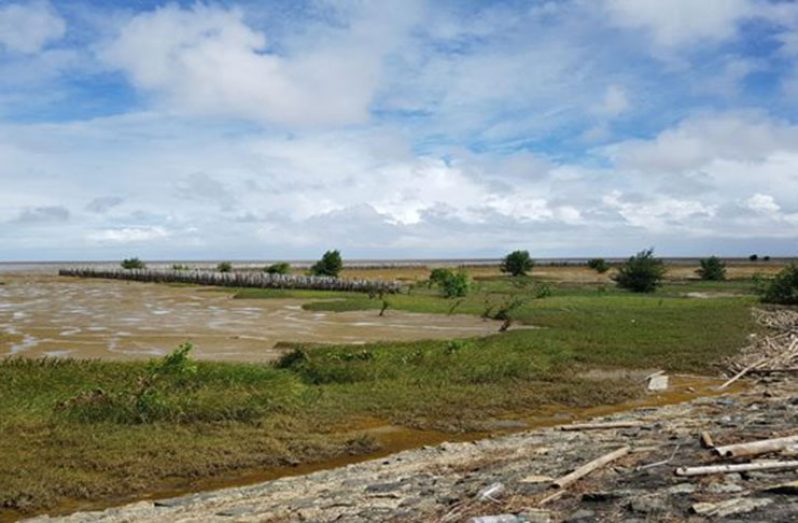THE Mangrove Restoration Department has increased its efforts to improve coastal resilience through the restoration of coastal mangrove ecosystems on the Essequibo Coast.
According to a statement from the National Agricultural Research and Extension Institute (NAREI), its Chief Executive Officer (CEO), Dr. Oudho Homenauth and Coordinator of the Mangrove Restoration Department, Kene Moseley visited several of the restoration sites in Region Two (Pomeroon-Supenaam).
The aim of the visit was to get an update on how the projects were performing at the different sites along the Essequibo Coast.
At Walton Hall, the Bamboo Brushwood Dam was used to trap sediments in an effort to increase elevation, while the spartina grass, which was planted in November last year, will promote consolidation of the soil and trap mangrove seeds.
NAREI also pointed out that at Reliance, both brushwood dam and geotextile tube groynes were constructed.
The geotextile tubes trap sediments and increase elevation so mangroves can be regenerated. The brushwood dam is extended to Mainstay and Land of Plenty.
“The Department is currently monitoring and conducting research on the proliferation of ‘bsi bsi’ (Cyperus articulatus) along this stretch of coastline,” NAREI said in its statement.
The use of geotextile tube groynes and spartina grass at Devonshire Castle have resulted in increased elevation and extensive natural regeneration of mangroves.



.jpg)









